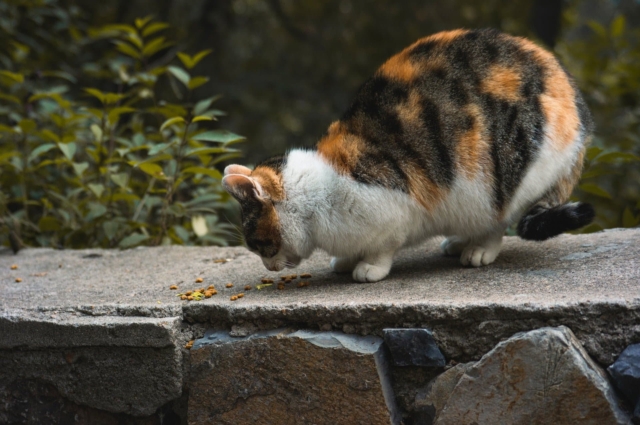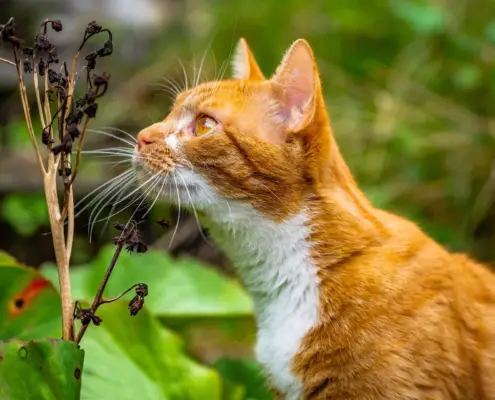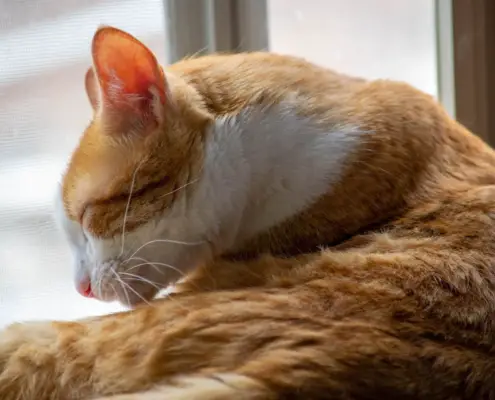
Cats are obligate carnivores, which means that their bodies are designed to thrive on a diet that consists primarily of meat. Providing a balanced diet is crucial for your cat’s overall health and well-being. A proper cat diet ensures that your feline friend receives the essential nutrients necessary for growth, energy, and a strong immune system.
A balanced cat diet consists of high-quality protein, moderate amounts of fat, and limited carbohydrates. Protein is essential for building and repairing tissues, while fat provides a concentrated source of energy. Carbohydrates should be kept to a minimum, as cats do not have a dietary requirement for them.
In addition to protein, fat, and carbohydrates, cats require specific vitamins and minerals. These include vitamins A, D, and E, as well as minerals like calcium, phosphorus, and potassium. A balanced cat diet will provide these nutrients in the correct proportions, ensuring optimal health for your feline companion.
To ensure that your cat’s diet is balanced, it is important to feed them a complete and balanced commercial cat food. These foods are formulated to meet the specific nutritional needs of cats and are available in both wet and dry forms. Wet cat food is a great option as it provides cats with the hydration they need, while dry cat food can be more convenient. Whichever option you choose, make sure to read the label and select a high-quality brand that meets all of your cat’s nutritional requirements.
Understanding Your Cat’s Nutritional Needs
While it is important to provide a balanced diet for your cat, it is equally crucial to understand their specific nutritional needs. Cats have unique dietary requirements that differ from other animals, including humans. Understanding these needs will help you make informed decisions when it comes to feeding your feline friend.
Protein is the most important nutrient for cats, as they require a higher protein intake than many other animals. Protein provides the essential amino acids that cats cannot produce on their own. Look for cat foods that list a high-quality source of animal protein, such as chicken, turkey, or fish, as the first ingredient.
Fat is another important component of a cat’s diet. It provides them with energy and aids in the absorption of fat-soluble vitamins. However, it is important to avoid excessive fat intake, as it can lead to obesity and other health issues. Look for cat foods that contain moderate amounts of fat, derived from healthy sources like chicken fat or fish oil.
Carbohydrates should be limited in a cat’s diet, as their bodies are not designed to efficiently digest and utilize them. Cats are unable to produce the enzymes necessary to break down carbohydrates properly. While some carbohydrates are necessary to provide fiber and aid in digestion, they should make up a small percentage of a cat’s overall diet.
Common Mistakes in Cat Feeding
Feeding cats is not as simple as filling up their bowl and leaving them to eat whenever they please. There are several common mistakes that cat owners make when it comes to feeding their feline friends. Avoiding these mistakes will help ensure that your cat receives the proper nutrition they need to thrive.
One common mistake is overfeeding. Obesity is a prevalent issue among cats, and overfeeding is often the culprit. It is important to follow the feeding guidelines provided by the cat food manufacturer and monitor your cat’s weight. If your cat is gaining weight, it may be necessary to adjust their portion sizes accordingly.
Another mistake is feeding an unbalanced diet. While it may be tempting to feed your cat a homemade diet or rely solely on a single type of cat food, this can lead to nutritional deficiencies. It is important to provide a variety of foods and ensure that they meet all of your cat’s nutritional requirements. If you choose to prepare homemade cat food, consult with a veterinarian or veterinary nutritionist to ensure that it is nutritionally complete.
Lastly, many cat owners overlook the importance of proper hydration. Cats have a low thirst drive and may not drink enough water on their own. This is especially true for cats on a dry food diet. Adding wet food to your cat’s diet can help increase their water intake and prevent dehydration. Additionally, providing fresh, clean water at all times is essential.
Types of Cat Diets – Wet, Dry, Raw, and Homemade
When it comes to feeding your cat, there are several types of diets to consider. Each has its own advantages and disadvantages, and the best option for your cat will depend on their individual needs and preferences.
Wet cat food, also known as canned cat food, is a popular choice for many cat owners. It has a high moisture content, which helps to keep cats hydrated and can be especially beneficial for cats with urinary tract issues. Wet cat food also tends to be more palatable for cats, making it a good option for picky eaters.
Dry cat food, also known as kibble, is another common choice. It is convenient, has a long shelf life, and is often more affordable than wet cat food. However, it typically has a lower moisture content, which can contribute to dehydration in some cats. If you choose to feed your cat a dry food diet, make sure to provide plenty of fresh water and monitor their water intake.
Raw cat food diets have gained popularity in recent years. These diets consist of raw meat, organs, and bones, and are often supplemented with fruits, vegetables, and other ingredients. Supporters of raw cat food diets claim that they mimic a cat’s natural diet and provide numerous health benefits. However, it is important to note that raw cat food diets carry a higher risk of bacterial contamination and may not be nutritionally complete.
Homemade cat food diets involve preparing meals for your cat using fresh, whole ingredients. This allows you to have complete control over what goes into your cat’s food and can be tailored to their specific needs. However, homemade cat food diets require careful planning and knowledge of feline nutrition to ensure that they are nutritionally balanced. Consult with a veterinarian or veterinary nutritionist if you choose to feed your cat a homemade diet.
Choosing the Right Cat Food Brand
With so many cat food brands on the market, choosing the right one for your feline friend can be overwhelming. It is important to select a high-quality brand that meets all of your cat’s nutritional requirements and fits within your budget. Here are some factors to consider when choosing a cat food brand:
- Ingredients: Look for cat foods that list high-quality animal protein as the first ingredient. Avoid brands that contain fillers, by-products, and artificial additives.
- Nutritional adequacy: Ensure that the cat food brand meets the nutritional requirements set by the Association of American Feed Control Officials (AAFCO) or European Pet Food Industry Federation (FEDIAF). Look for a statement on the packaging that indicates that the food is complete and balanced.
- Quality control: Choose a cat food brand that has rigorous quality control measures in place. This includes regular testing for contaminants and adherence to manufacturing standards.
- Product reviews: Read reviews from other cat owners to get an idea of the brand’s reputation and the experiences of other cats on the diet.
- Price: While price should not be the only factor in your decision, it is important to choose a cat food brand that fits within your budget. Consider the cost per serving and the overall value of the product.
Remember that every cat is unique, and what works for one cat may not work for another. If you are unsure about which cat food brand to choose, consult with your veterinarian for personalized recommendations.
Transitioning Your Cat to a New Diet
When introducing a new diet to your cat, it is important to do so gradually. Sudden changes in diet can cause digestive upset and lead to refusal of the new food. Follow these steps to successfully transition your cat to a new diet:
- Start slow: Begin by mixing a small amount of the new food with your cat’s current food. Gradually increase the proportion of the new food over the course of 7-10 days.
- Observe your cat: Monitor your cat’s response to the new diet. Look for any signs of digestive upset, such as vomiting or diarrhea. If these symptoms occur, slow down the transition process or consult with your veterinarian.
- Be patient: Some cats may take longer to adjust to a new diet than others. Be patient and allow your cat the time they need to become accustomed to the new food.
- Avoid free-feeding: During the transition period, it is important to avoid free-feeding. Stick to a regular feeding schedule and monitor your cat’s portion sizes to prevent overeating.
By following these steps, you can help ensure a smooth transition to a new diet for your cat.
Feeding Schedule and Portion Control for Cats
Establishing a feeding schedule and practicing portion control are important for maintaining your cat’s weight and overall health. Cats are prone to obesity, which can lead to numerous health issues, including diabetes, joint problems, and heart disease. Here are some tips for establishing a feeding schedule and practicing portion control:
- Follow the feeding guidelines: Read the label on your cat’s food and follow the recommended feeding guidelines. These guidelines are based on your cat’s weight and activity level and provide a general starting point for portion sizes.
- Divide meals into multiple feedings: Instead of feeding your cat one large meal, divide their daily portion into multiple smaller meals. This helps to prevent overeating and keeps your cat satisfied throughout the day.
- Monitor your cat’s weight: Regularly weigh your cat and monitor their body condition score. If your cat is overweight or underweight, adjust their portion sizes accordingly.
- Avoid free-feeding: Free-feeding, or leaving food out all day for your cat to graze on, can lead to overeating and weight gain. Stick to a regular feeding schedule and remove any uneaten food after 20-30 minutes.
- Use puzzle feeders: Puzzle feeders are interactive toys that require your cat to work for their food. These toys provide mental stimulation and slow down your cat’s eating, preventing them from scarfing down their food too quickly.
Establishing a feeding schedule and practicing portion control may take some trial and error, but it is well worth the effort for the health and well-being of your cat.
Supplements and Treats for a Healthy Cat Diet
While a balanced cat diet should provide all of the essential nutrients your cat needs, there are some instances where supplements may be beneficial. Additionally, treats can be a fun way to reward your cat or add variety to their diet. Here are some considerations for supplements and treats in a healthy cat diet:
- Supplements: If you are feeding your cat a homemade diet or have concerns about specific nutrient deficiencies, consult with your veterinarian about the need for supplements. Common supplements for cats include omega-3 fatty acids, probiotics, and joint support supplements.
- Treats: Treats can be a great way to bond with your cat and provide them with additional mental stimulation. However, it is important to choose treats that are healthy and appropriate for cats. Look for treats that are made from high-quality ingredients and are specifically formulated for cats. Avoid treats that are high in carbohydrates or contain artificial additives.
When it comes to supplements and treats, moderation is key. Too many treats or excessive supplementation can lead to nutritional imbalances or weight gain. Consult with your veterinarian for personalized recommendations.
Special Considerations for Senior Cats and Cats with Health Issues
As cats age, their nutritional needs change. Senior cats often have lower energy requirements and may require different levels of certain nutrients. Additionally, cats with health issues may have specific dietary requirements. Here are some considerations for senior cats and cats with health issues:
- Senior cats: Senior cats may benefit from a cat food specifically formulated for their needs. These diets are often lower in calories and higher in fiber to support weight management and digestive health. They may also contain additional joint support ingredients and antioxidants to promote overall wellness.
- Cats with health issues: Cats with specific health issues, such as kidney disease, diabetes, or food allergies, may require specialized diets. These diets are formulated to support the specific needs of cats with these conditions and may require a prescription from your veterinarian.
If you have a senior cat or a cat with a health issue, consult with your veterinarian for personalized dietary recommendations.
Conclusion
Mastering the art of nourishing your feline friend starts with understanding their specific nutritional needs and providing a balanced diet. A balanced cat diet consists of high-quality protein, moderate amounts of fat, and limited carbohydrates. Wet and dry cat food options are available, each with their own advantages. Choosing the right cat food brand is crucial, considering ingredients, nutritional adequacy, quality control, and price. Transitioning your cat to a new diet requires patience and gradual changes. Establishing a feeding schedule and practicing portion control are essential for maintaining your cat’s weight and overall health. Supplements and treats should be used in moderation, with consideration for your cat’s specific needs. Senior cats and cats with health issues may require specialized diets. By following these guidelines, you can ensure that your feline friend receives the proper nutrition they need to thrive and live a long, healthy life.
Consult with your veterinarian for personalized recommendations regarding your cat’s diet and any specific health concerns.
If you enjoyed my article, I would appreciate you sharing it with your network.

Sima Ndlebe
Sima writes for CatBuzz. He is interested in Cats, Health and Fitness, and Entrepreneurship.
Published: 13 October 2023
Related Articles
Disclaimer
The content found on CatBuzz.org is presented on an "as is" basis and is intended for general consumer information and education purposes only. Any utilization of this information is voluntary and solely at the user's own risk.
None of the articles or content should be regarded as, or used in place of, veterinary medical advice, diagnosis, or treatment. The information provided on the website is purely for educational and informational intentions and should not be considered a substitute for professional guidance from a veterinarian or other qualified expert. The articles are designed to inform consumers about veterinary healthcare and medical matters that may impact their cat's daily life. It should be noted that this website and its services do not constitute the practice of any form of veterinary medical advice, diagnosis, or treatment. CatBuzz.org explicitly disclaims any liability for any direct or indirect damages or losses that may arise from the use of or reliance on the information contained within the content.
Consumers must consult a veterinarian, veterinary specialist, or another qualified veterinary healthcare provider when seeking advice regarding their cat's health or medical conditions. It is important not to ignore, avoid, or postpone seeking medical advice from a veterinarian or other qualified veterinary healthcare provider solely based on information obtained from this website. If you believe that your cat may be experiencing a medical issue or condition, it is imperative to promptly contact a qualified veterinary healthcare professional.



